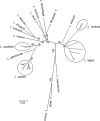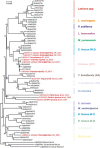Rabies in a postpandemic world: resilient reservoirs, redoubtable riposte, recurrent roadblocks, and resolute recidivism
- PMID: 37252063
- PMCID: PMC10195671
- DOI: 10.1186/s44149-023-00078-8
Rabies in a postpandemic world: resilient reservoirs, redoubtable riposte, recurrent roadblocks, and resolute recidivism
Abstract
Rabies is an ancient disease. Two centuries since Pasteur, fundamental progress occurred in virology, vaccinology, and diagnostics-and an understanding of pathobiology and epizootiology of rabies in testament to One Health-before common terminological coinage. Prevention, control, selective elimination, and even the unthinkable-occasional treatment-of this zoonosis dawned by the twenty-first century. However, in contrast to smallpox and rinderpest, eradication is a wishful misnomer applied to rabies, particularly post-COVID-19 pandemic. Reasons are minion. Polyhostality encompasses bats and mesocarnivores, but other mammals represent a diverse spectrum of potential hosts. While rabies virus is the classical member of the genus, other species of lyssaviruses also cause the disease. Some reservoirs remain cryptic. Although global, this viral encephalitis is untreatable and often ignored. As with other neglected diseases, laboratory-based surveillance falls short of the notifiable ideal, especially in lower- and middle-income countries. Calculation of actual burden defaults to a flux within broad health economic models. Competing priorities, lack of defined, long-term international donors, and shrinking local champions challenge human prophylaxis and mass dog vaccination toward targets of 2030 for even canine rabies impacts. For prevention, all licensed vaccines are delivered to the individual, whether parenteral or oral-essentially 'one and done'. Exploiting mammalian social behaviors, future 'spreadable vaccines' might increase the proportion of immunized hosts per unit effort. However, the release of replication-competent, genetically modified organisms selectively engineered to spread intentionally throughout a population raises significant biological, ethical, and regulatory issues in need of broader, transdisciplinary discourse. How this rather curious idea will evolve toward actual unconventional prevention, control, or elimination in the near term remains debatable. In the interim, more precise terminology and realistic expectations serve as the norm for diverse, collective constituents to maintain progress in the field.
Keywords: Diagnosis; Epidemiology; Lyssavirus; Neglected Tropical Diseases; Pathogenesis; Prophylaxis; Rabies; Surveillance; Vaccination; Zoonosis.
© The Author(s) 2023.
Conflict of interest statement
Competing interestsThe authors declare that they have no competing interests.
Figures








References
-
- Abdul-Jalil, M. 2020. Working to remove the fear of rabies from Kabul, Afghanistan. 10.2307/j.ctv10crcv7.93. https://endrabiesnow.org/stories/view/working-to-remove-the-fear-of-rabi...
-
- Aldrich C, Leroux-Roels I, Huang KB, Bica MA, Loeliger E, Schoenborn-Kellenberger O, Walz L, Leroux-Roels G, von Sonnenburg F, Oostvogels L. Proof-of-concept of a low-dose unmodified mRNA-based rabies vaccine formulated with lipid nanoparticles in human volunteers: A phase 1 trial. Vaccine. 2021;39:1310–1318. doi: 10.1016/j.vaccine.2020.12.070. - DOI - PMC - PubMed
Publication types
LinkOut - more resources
Full Text Sources
Research Materials
